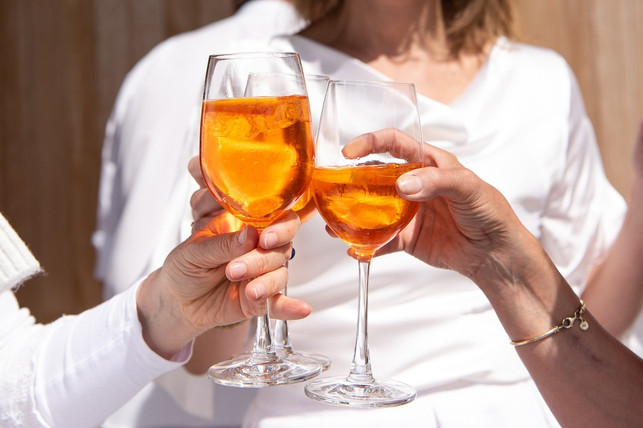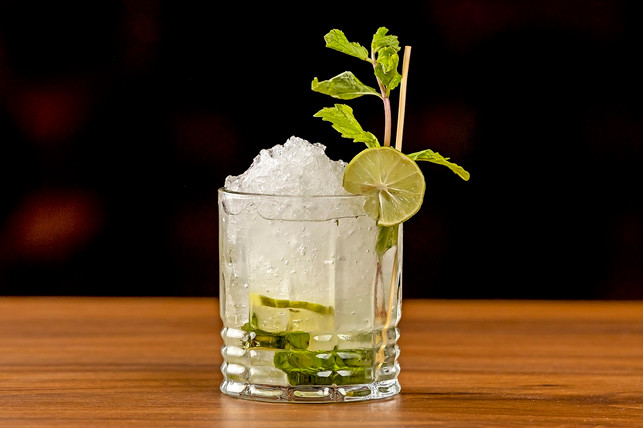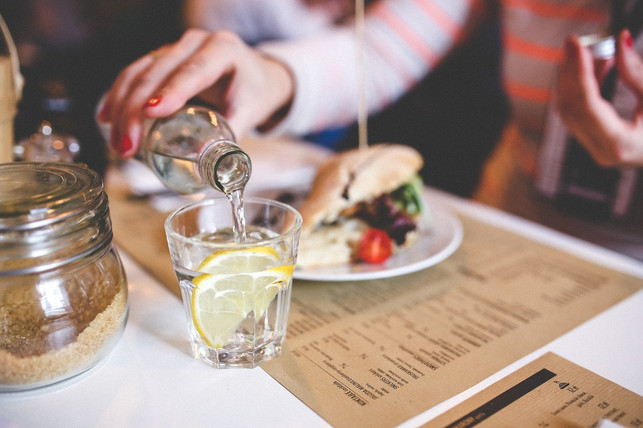
Many people plan to start the new year with less alcohol. Damp January is a less restrictive variant of Dry January. You can find out what’s behind it here.
Drinking less alcohol is one of the most common New Year’s resolutions: 22 percent of people said in a survey that they wanted to reduce their alcohol consumption in 2025. Some of them therefore start the new year by completely abstaining from alcohol – the so-called Dry January. Dry January is intended to help raise awareness of your own alcohol consumption by taking a strict break from alcohol.
A watered-down version of this is Damp January – a new trend in which you don’t commit to complete abstinence from alcohol in January, but rather just reduce your consumption. So it’s not a completely “dry” January, but rather a somewhat “wet” one.
What is Damp January and what benefits does it bring?

(Photo: CC0 / Pixabay / pen_ash)
Damp January is a less restrictive variation of Dry January that involves reducing alcohol consumption rather than giving it up entirely.
According to some experts, drinking less alcohol already has a positive effect on your health. Studies show that even a moderate reduction in alcohol consumption can lead to improvements in blood pressure, mental health, and liver health. It can also lower your risk of cancer and heart disease, as well as improve your sleep quality, energy levels, and even your skin.
In addition, they consider Damp January to be a more sustainable approach as it supports long-term behavior changes. Damp January strengthens your sense of control as you make more conscious decisions about when and how much you drink. It also helps you learn to say “no” when you are offered alcohol. This approach is therefore more flexible and allows you to see even small progress as a success, instead of letting yourself be put under pressure by the strict “all or nothing” principle of Dry January.
Scientific findings
Studies have already reported on the longer-term effects of so-called “abstinence” challenges such as Dry January: These show that people who take part in Dry January lose weight, sleep better, have more energy and save money. They also report gaining more control over their alcohol consumption. Even if the test subjects drink again later, they still drink less six months after the challenge.
You can find out more here: This is how your body reacts to 4 weeks without alcohol
However, there are still no equivalent studies on Damp January.
Implement Damp January

(Photo: CC0 / Pixabay / Anilsharma26)
There are several ways you can implement Damp January. Maybe you’ll do what Katie Witkiewitz, director of the Center on Alcohol, Substance Use And Addiction at the University of New Mexico, does. She sets herself the goal of reducing her alcohol consumption by 50 percent: she drinks on 50 percent fewer days than usual and only consumes half the usual amount on these occasions. In her personal experience, this alone improves her sleep and energy levels.
You might also find these strategies for drinking less in January (and beyond) helpful:
-
Drink only on special occasions: Avoid alcohol in January, except on special occasions such as weddings, birthdays or anniversaries.
-
Important: Drink less per occasion: You should not view days on which you drink as a free pass for excessive consumption. Instead, also limit the amount of alcohol you consume on one occasion.
-
Incorporate more alcohol-free days: Reduce the number of days a month you drink alcohol and give your body a break more often.
-
Combination strategy: Combine different approaches by reducing both the number of days you drink and the amount you drink on those days. Plan e.g. B. Have several alcohol-free days every week and drink less on the other days.
Also try the following tips to drink less alcohol:
- There are apps that help you track and control your alcohol consumption.
- Follow the “20-minute rule”: Cravings often go away after about 20 minutes. Distract yourself when you feel like drinking – play a game, go for a walk, or talk to friends.
- Find non-alcoholic versions of wine, beer or spirits that you enjoy. Non-alcoholic cocktails are also a great alternative.
Review: Who is Damp January suitable for?

(Photo: CC0 / Pixabay / kaboompics)
Damp January is attractive to many because it is not a strict abstinence. Even if you don’t quite reach your goal of reducing alcohol consumption by, for example, 30 percent, drinking less is still a success: “Every reduction in alcohol consumption is associated with improvements in health,” says Katie Witkiewitz. “The more you drink, the higher the health risks are, and the less you drink, the lower they are.”
According to Witkiewitz, Damp January is suitable for anyone who wants to reflect on and reduce their own alcohol consumption.
With one exception: People who are addicted to alcohol should only carry out Damp January with medical advice and supervision, as alcohol withdrawal can have severe side effects.
More about this here: Alcohol: Everything about legal principles and medical findings
Other experts are also critical of Damp January because, according to scientific estimates, there is no amount of alcohol consumption that is harmless to health – even less alcohol than usual is more harmful to your health than no alcohol at all.
Damp January, on the other hand, gives the impression that moderate drinking is healthy and possible, even though this is exactly what is difficult or even impossible for some people with experience of addiction. For people who have difficulty controlling their consumption, it is often easier and more sustainable to avoid alcohol altogether rather than trying to cut down.
Conclusion and recipe ideas
Conclusion: For many, but not all, people, Damp January is a good opportunity for an alcohol “reset” and an opportunity to regain more control over your drinking behavior. If you notice difficulty reducing your consumption even slightly, this could indicate the need for professional help.
In our guides you will find complete recipes for non-alcoholic drinks:
- Non-alcoholic Caipirinha: Delicious basic recipe for Virgin Caipi
- Three delicious mulled wine recipes: classic, white and non-alcoholic
- Peach punch: alcohol-free recipe with fresh fruit
- Non-alcoholic punch: delicious basic recipe and possible variations
- Ipanema: recipe for the non-alcoholic cocktail
Tip: In another article we explain how you can set and achieve goals.
Read more on Techzle\.com:
- Drink 2 liters daily: Must or myth?
- Film tear: This is how an alcohol-induced blackout occurs
- Break down alcohol: This is how alcohol breakdown works
** marked with ** or orange underlined Links to sources of supply are partly partner links: If you buy here, you are actively supporting Techzle\.com, because we then receive a small part of the sales proceeds. More info.